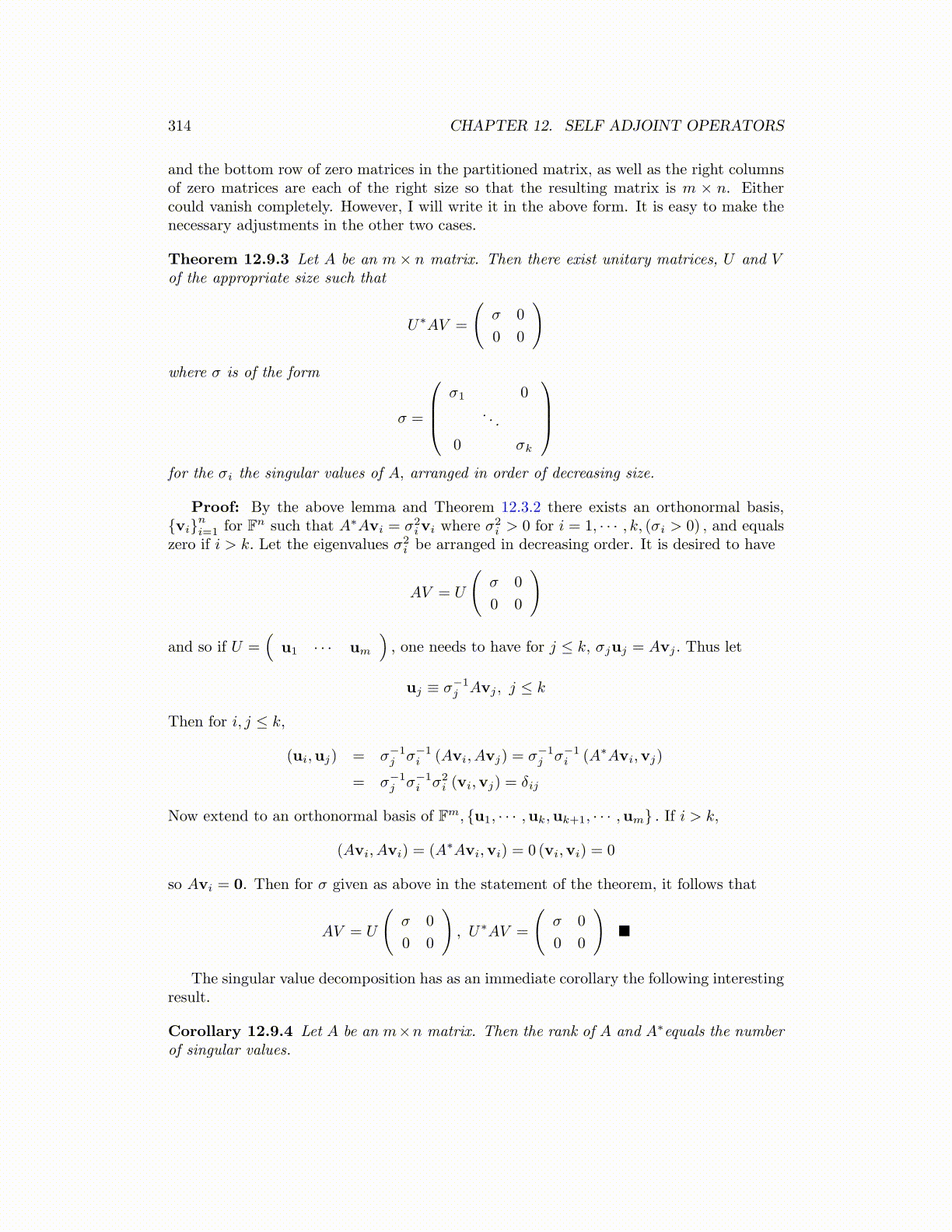
314 CHAPTER 12. SELF ADJOINT OPERATORS
and the bottom row of zero matrices in the partitioned matrix, as well as the right columnsof zero matrices are each of the right size so that the resulting matrix is m × n. Eithercould vanish completely. However, I will write it in the above form. It is easy to make thenecessary adjustments in the other two cases.
Theorem 12.9.3 Let A be an m× n matrix. Then there exist unitary matrices, U and Vof the appropriate size such that
U∗AV =
(σ 0
0 0
)
where σ is of the form
σ =
σ1 0
. . .
0 σk
for the σi the singular values of A, arranged in order of decreasing size.
Proof: By the above lemma and Theorem 12.3.2 there exists an orthonormal basis,{vi}ni=1 for Fn such that A∗Avi = σ2
ivi where σ2i > 0 for i = 1, · · · , k, (σi > 0) , and equals
zero if i > k. Let the eigenvalues σ2i be arranged in decreasing order. It is desired to have
AV = U
(σ 0
0 0
)
and so if U =(
u1 · · · um
), one needs to have for j ≤ k, σjuj = Avj . Thus let
uj ≡ σ−1j Avj , j ≤ k
Then for i, j ≤ k,
(ui,uj) = σ−1j σ−1
i (Avi, Avj) = σ−1j σ−1
i (A∗Avi,vj)
= σ−1j σ−1
i σ2i (vi,vj) = δij
Now extend to an orthonormal basis of Fm, {u1, · · · ,uk,uk+1, · · · ,um} . If i > k,
(Avi, Avi) = (A∗Avi,vi) = 0 (vi,vi) = 0
so Avi = 0. Then for σ given as above in the statement of the theorem, it follows that
AV = U
(σ 0
0 0
), U∗AV =
(σ 0
0 0
)■
The singular value decomposition has as an immediate corollary the following interestingresult.
Corollary 12.9.4 Let A be an m×n matrix. Then the rank of A and A∗equals the numberof singular values.